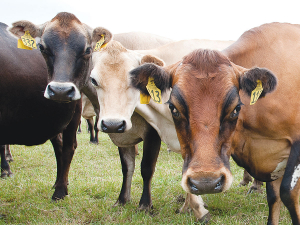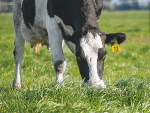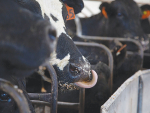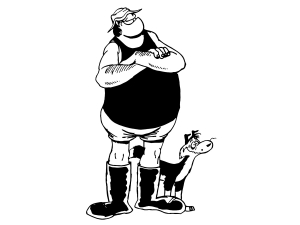These losses aren’t just associated with lost milk, treatments, increased culling and time1,2 but cows affected by mastitis also have reduced milk production compared to uninfected herd-mates3.
Mastitis is inflammation of the udder tissue and is most commonly caused by bacteria entering the udder through open teat ends. Calving is a critical time when cows are more prone to developing mastitis. It is important to have good management for prevention, rapid diagnosis and effective treatment of mastitis around calving.
Keeping the udder and teat ends clean is important in the lead up to calving as cows “spring up”. Cows close to calving are naturally immunosuppressed, and if they are lying in dirt and muck, their full udders are exposed to mastitis-causing bacteria in the environment. Clean and relatively dry springer breaks will help prevent mastitis, as will keeping springers off paddocks where effluent has been spread, even in the previous season. If required, shift springer breaks more regularly. Any springers that are leaking milk should be milked, as this means that their teat ends are open and they are prone to infection4.
Whether it’s springers, colostrums, or milkers that you’re milking, it’s important to only put cups on clean, dry teats.
When droplets of dirty water or muck hit open teat ends, the risk of mastitis goes up. So, if cows come in for milking with dirty teats, give them a quick clean with a dry paper towel. Don’t hose udders. If teats are wet, it’s best to dry them before cupping them up.
After calving, cows will be in the “colostrum mob” for their first eight milkings before entering the milking herd.
To check for clinical mastitis, strip all colostrum cows at every milking5. It’s normal for colostrum cows to have swollen, sensitive udders, and for their milk to be thicker and more yellow than store-bought milk, but clots, flakes, or watery milk are the first signs of clinical mastitis6. If you find a colostrum cow with clinical mastitis, mark, record, separate and treat her following your farm’s mastitis treatment protocols. Keep these cows in the colostrum mob until the signs of mastitis resolve and any withholding periods from treatment are complete.
A helpful tool to identify cows with elevated somatic cell counts with no clinical signs of mastitis, otherwise known as sub clinical mastitis, is the Rapid Mastitis Test or RMT.
RMT all colostrum cows at their eighth milking, before drafting them into the milking herd. It’s normal for some cows to be RMT positive around calving time, so keep these cows in the mastitis mob until they are RMT negative. If you have a cow test RMT-positive for several milkings beyond eight, you should discuss further diagnostics and treatment with your veterinarian.
A final important check before drafting colostrum cows into the milkers is to make sure that you have followed all withholding periods for dry cow therapy, to ensure that milk entering the vat is fit for sale.
For all cows, effective teat spraying is the single biggest step you can take to prevent mastitis7. Cows should be teat sprayed with a commercial product, mixed and applied following the manufacturer’s recommendations, every time that they go through the shed. Also, after milking, give all cows immediate access to feed to encourage them to stay standing while their teat ends close.
DairyNZ’s SmartSAMM states that over calving, if you have more than 8 clinical cases per 100 mixed age cows that calve each month, or more than 16 clinical cases per 100 heifers that calve each month, you should seek out some help from your vet or milk quality consultant8.
• For more information about mastitis, speak with your vet, consult DairyNZ SmartSAMM resources, or visit www.TopFarmers.co.nz
1National Mastitis Advisory Committee (2006). The cost of mastitis. Dairy Insight Research Report 2005/2006. Final Report.
2DairyNZ (2016) Quick Stats about dairying—New Zealand https://www.dairynz.co.nz/media/1357994/quickstats-new-zealand.pdf
3https://www.dairynz.co.nz/animal/cow-health/mastitis/tools-and-resources/smartsamm-gap-calculator
4Dairy NZ SmartSAMM Technote 1
5Dairy NZ SmartSAMM Technote 3
6Dairy NZ SmartSAMM Technote 5
7Dairy NZ SmartSAMM Technote 7
8Dairy NZ SmartSAMM Technote 10
• Dr Sean Daly is a vet and technical adviser at MSD Animal Health.


















